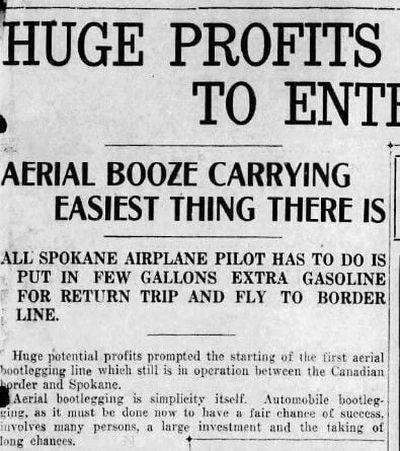100 years ago in Spokane: A Chronicle exposé shed light on the seamy industry of aerial bootlegging

Aerial bootlegging was proving to be the easiest and most profitable way to smuggle booze across the Canadian border.
At least, that was the conclusion of an investigative report by the Spokane Daily Chronicle.
“Aerial bootlegging is simplicity itself,” the Chronicle said. “Automobile bootlegging – as it must be done now to have a fair chance of success – involves many persons, a large investment and taking of many chances.”
The Spokane aerial bootlegger, on the other hand, needed only to stow some extra gasoline in the cargo compartment, fly over the border, load up 18 cases of whiskey and pour the extra gas in the tank for the flight back.
“In five minutes, the operation is complete,” the Chronicle said. “The airplane takes to the air and heads south. Less than three and one-half hours after the start is made, the airplane, with its load, is back in the Spokane country.”
If the pilot saw officers waiting at the designated landing spot, the pilot could simply land someplace else. If officers showed up later, while the plane was being unloaded, the pilot could restart the engine, wave goodbye to the onrushing prohibition agents and take to the sky.
This explains why the notorious rum-running pilot Jack Smith (probably an alias) was still at large, even after federal agents had information about his intended landing places.
In a few occasions, Smith (or another rum-running pilot) was forced to land prematurely due to engine trouble.
In those cases, the pilot traded some whiskey to some bystanders for new spark plugs, or help with repairs, and was soon on his way.